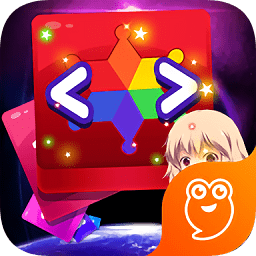Python学习笔记(8):面向对象
时间:2010-09-04 来源:known
前面提到的操作函数和语句块是传统的面向过程编程,而编写大型程序,通常采用面向对象编程。类和对象是面向对象编程的两个主要方面,类创建一个新类型,而对象是类的实例。Python没有什么值类型与引用类型之分,它把所有事物统统看作是类。类使用class关键字来创建。
1. Self
类的方法与普通的函数只有一个特别的区别——它们必须有一个额外的第一个参数名称,但是在调用这个方法的时候你不为这个参数赋值,Python会提供这个值。这个特别的变量指对象本身,按照惯例它的名称是self。
你一定很奇怪Python如何给self赋值以及为何你不需要给它赋值。举一个例子会使此变得清晰。假如你有一个类称为MyClass和这个类的一个实例MyObject。当你调用这个对象的方法MyObject.method(arg1, arg2)的时候,这会由Python自动转为MyClass.method(MyObject, arg1, arg2)——这就是self的原理了。
2. 类
一个空类:
class Person:
pass #An empty block
类的使用:
p = Person() print(p)
3. 方法
类/对象可以拥有像函数一样的方法,这些方法与函数的区别只是一个额外的self变量。
class Person:
def sayHi(self):
print("Hello, how are you?")
p = Person()
p.sayHi()
注意调用sayHi方法时没有任何参数,但仍然在函数定义时有self。
4. __init__方法
在Python的类中有很多方法的名字有特殊的重要意义。像__init__,类似于构造函数。__init__方法在类的一个对象被建立时,马上运行。这个方法可以用来对你的对象做一些你希望的初始化 。注意,这个名称的开始和结尾都是双下划线。
class Person:
def __init__(self, name):
self.name = name
def sayHi(self):
print("Hello, my name is", self.name)
p = Person("known")
p.syaHi()
5. 域
Python有两种类型的域——类的变量和对象的变量,它们根据是类还是对象拥有这个变量而区分。
类的变量由一个类的所有对象(实例)共享使用。只有一个类变量的拷贝,所以当某个对象对类的变量做了改动的时候,这个改动会反映到所有其他的实例上。
对象的变量由类的每个对象/实例拥有。因此每个对象有自己对这个域的一份拷贝,即它们不是共享的,在同一个类的不同实例中,虽然对象的变量有相同的名称,但是是互不相关的。
class Person:
'''Represnets a person.'''
population = 0
def __init__(self, name):
'''Initializes the person's data.'''
self.name = name
print("(Initializing %s)" % self.name)
#When this person is created, he/she adds to the population
Person.population += 1
def __del__(self):
'''I am dying.'''
print("%s says bye." % self.name)
Person.population -= 1
if Person.population == 0:
print("I am the last one.")
else:
print("There are still %d people left." % Person.population)
def sayHi(self):
'''Greeting by the person.
Really, that's all it does.'''
print("Hi, my name is %s." % self.name)
def howMany(self):
'''Prints the current population.'''
if Person.population == 1:
print("I am the only person here.")
else:
print("We have %d person here." % Person.population)
swaroop = Person('Swaroop')
swaroop.sayHi()
swaroop.howMany()
kalam = Person('Abdul Kalam')
kalam.sayHi()
kalam.howMany()
swaroop.sayHi()
swaroop.howMany()
del kalam
del swaroop
运行结果:
(Initializing Swaroop)
Hi, my name is Swaroop.
I am the only person here.
(Initializing Abdul Kalam)
Hi, my name is Abdul Kalam.
We have 2 persons here.
Hi, my name is Swaroop.
We have 2 persons here.
Abdul Kalam says bye.
There are still 1 people left.
Swaroop says bye.
I am the last one.
6. 继承
在类名后面跟一对圆括号,基类名写在圆括号内。
class SchoolMember:
'''Represents any school member.'''
def __init__(self, name, age):
self.name = name
self.age = age
print("(Initialized SchoolMember: %s)" % self.name)
def tell(self):
'''Tell my details.'''
print("Name:'%s' Age:'%s'" % (self.name, self.age))
class Teacher(SchoolMember):
'''Represents a teacher.'''
def __init__(self, name, age, salary):
SchoolMember.__init__(self, name, age)
self.salary = salary
print("(Initialized Teacher: %s)" % self.name)
def tell(self):
SchoolMember.tell(self)
print("Salary: '%d'" % self.salary)
class Student(SchoolMember):
'''Represents a student.'''
def __init__(self, name, age, marks):
SchoolMember.__init__(self, name, age)
self.marks = marks
print("(Initialized Student: %s)" % self.name)
def tell(self):
SchoolMember.tell(self)
print("Marks: '%d'" % self.marks)
t = Teacher("Mrs. Shrividya", 40, 30000)
s = Student("Swaroop", 22, 75)
print() # prints a blank line
members = [t, s]
for member in members:
member.tell() # works for both Teachers and Students
输出结果:
(Initialized SchoolMember: Mrs. Shrividya)
(Initialized Teacher: Mrs. Shrividya)
(Initialized SchoolMember: Swaroop)
(Initialized Student: Swaroop)
Name:'Mrs. Shrividya' Age:'40' Salary: '30000'
Name:'Swaroop' Age:'22' Marks: '75'










